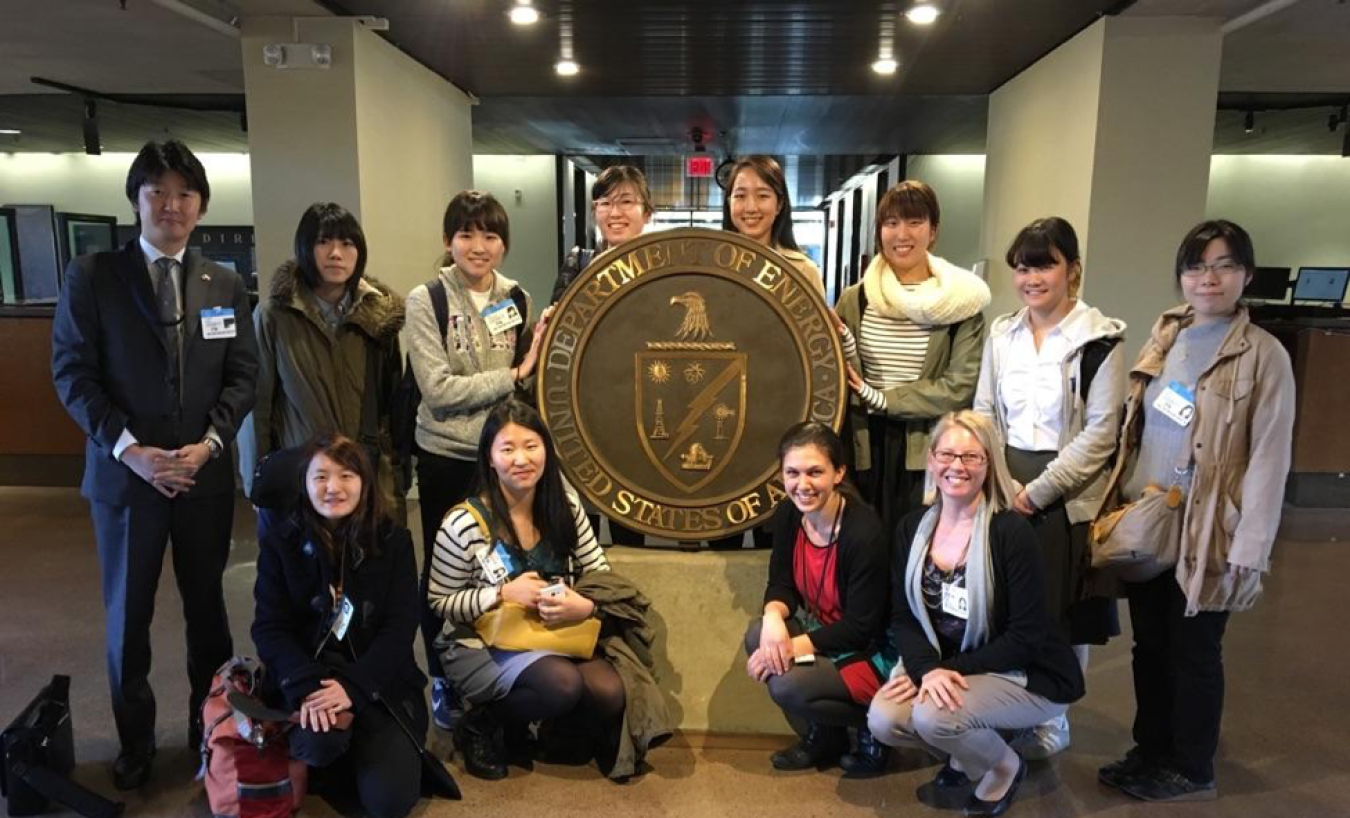On March 29, the Office of Nuclear Energy teamed up with the Office of Defense Nuclear Nonproliferation (DNN) a...
March 31, 2017
The TOMODACHI Initiative is a public-private partnership, born out of support for Japan’s recovery from the Great East Japan Earthquake.
By Grace Meikle
Former Japan Desk Officer, Office of International Nuclear Energy Policy & Cooperation
On March 29, the Department of Energy’s (DOE) Office of Nuclear Energy (NE) teamed up with the Office of Defense Nuclear Nonproliferation (DNN) and the Office of Counterterrorism and Counterproliferation to host 10 Japanese university students from the Tomodachi STEM Program at the Department of Energy (DOE). The program, led by Dr. Junichiro Kono and Ms. Sarah Phillips out of Rice University, aims to promote women in Science, Technology, Engineering, and Math (STEM) fields and enhance the U.S.-Japanese partnership following the 2011 Tohoku earthquake, tsunami, and Fukushima nuclear disaster.
During their tour of DOE, the students heard presentations on U.S.-Japanese cooperation in civil nuclear energy, nonproliferation, and nuclear incident response. They also had the unique opportunity to visit DOE’s Emergency Operations Center and see firsthand where DOE experts worked tirelessly to respond to the Fukushima nuclear accident as it unfolded.
“I have never been to any ministry building of Japan, so it was such a valuable experience for me to visit the U.S. government,” said Yumiko Kimura, who studies biomedical engineering at the Tokyo University of Science.
Dr. Michael Goff, Senior Advisor to the NE Assistant Secretary, led the discussion on civil nuclear energy. The students raised complex questions, such as how to educate the public on radiation science and recognize the importance of nuclear power as a baseload source of energy.
“For Japanese, nuclear energy is a controversial topic because of the Fukushima nuclear accident,” Kimura explained. “Now I know more about U.S. cooperation with Japan in the Fukushima emergency. I appreciated it and I felt strongly the importance of cooperation between our two countries.”
Giulia Bisconti, a senior advisor in NE who was deployed to the U.S. Embassy in Tokyo for two weeks following the accident, agreed. “I feel that our relationship with Japan is one of the most strategically important relationships,” she said.
The group also discussed the history of strong U.S.-Japanese cooperation in nuclear nonproliferation and nuclear security, spanning over three decades. Jaci Dickerson, program manager for international reactor conversion for DNN’s Office of Material Management and Minimization, gave an overview of DNN collaboration with Japan through the Nuclear Security Working Group, the Permanent Coordinating Group, and the Nuclear Security Summit process. “The best part about our work,” she said, “is that while collaborating with our partners’ best scientists, we are also making the world safer with every project.”
This program was also an opportunity for the students to see the breadth of career options that are available to them as STEM students. Dr. Dan Blumenthal, a DOE physicist who was also deployed to Japan after the Fukushima accident, described how he used physics in the field to conduct ground and aerial surveys of the deposited radioactive material.
“Using physics in the field is very different from the lab,” he told the students. “In the field, you have no control over your environment.”
Director Heather Looney from the Office of Nuclear Incident Policy and Cooperation gave her perspective as a foreign policy expert. “Many pressing international security challenges have a technical component or a potential technical contribution towards resolution,” she said. “I enjoyed meeting these talented scientists and engineers and look forward to their contributions to addressing these future challenges.”
The students’ visit to DOE was part of a week-long capstone project to focus on science and technology policy and global leadership before they return to Japan. Prior to arriving in Washington, D.C., the students spent four weeks engaged in laboratory research at Rice University. Read their student profiles.
Aya Kawamura, who studies applied chemistry at Nagoya University, left DOE feeling inspired. “My dream is to engage in environmental problems in Japan using my chemistry knowledge,” she said. “I felt it is brilliant that scientists across the border work together towards problems of both countries. Now I am more interested in nuclear energy policies and the problems we have in Japan, and I feel enthusiasm to study it.”

